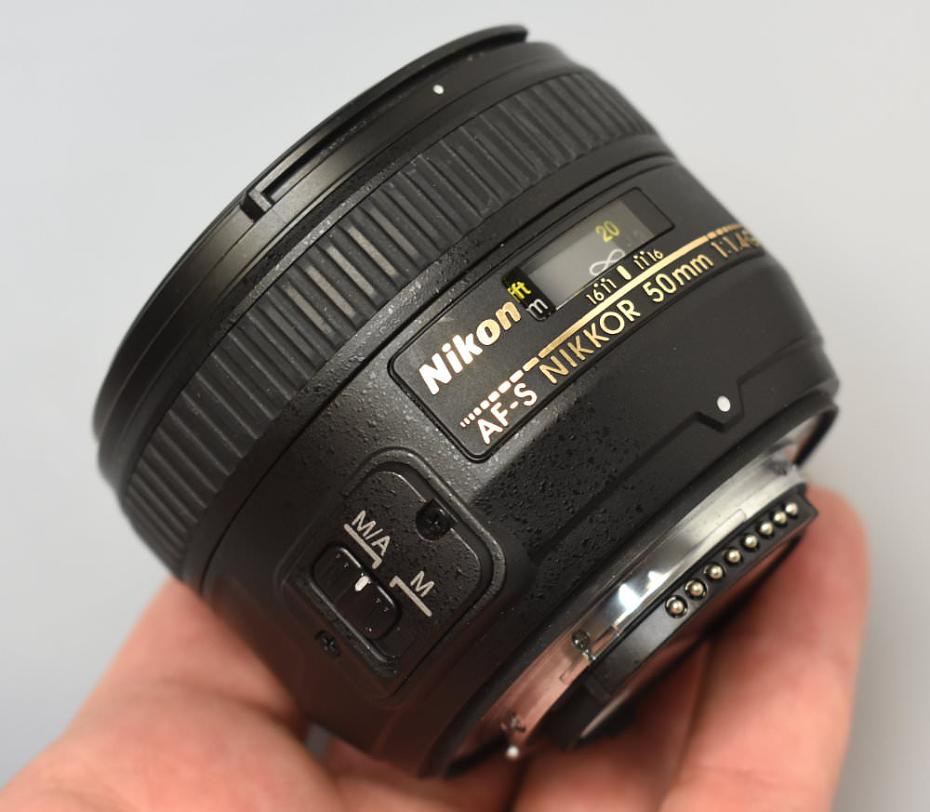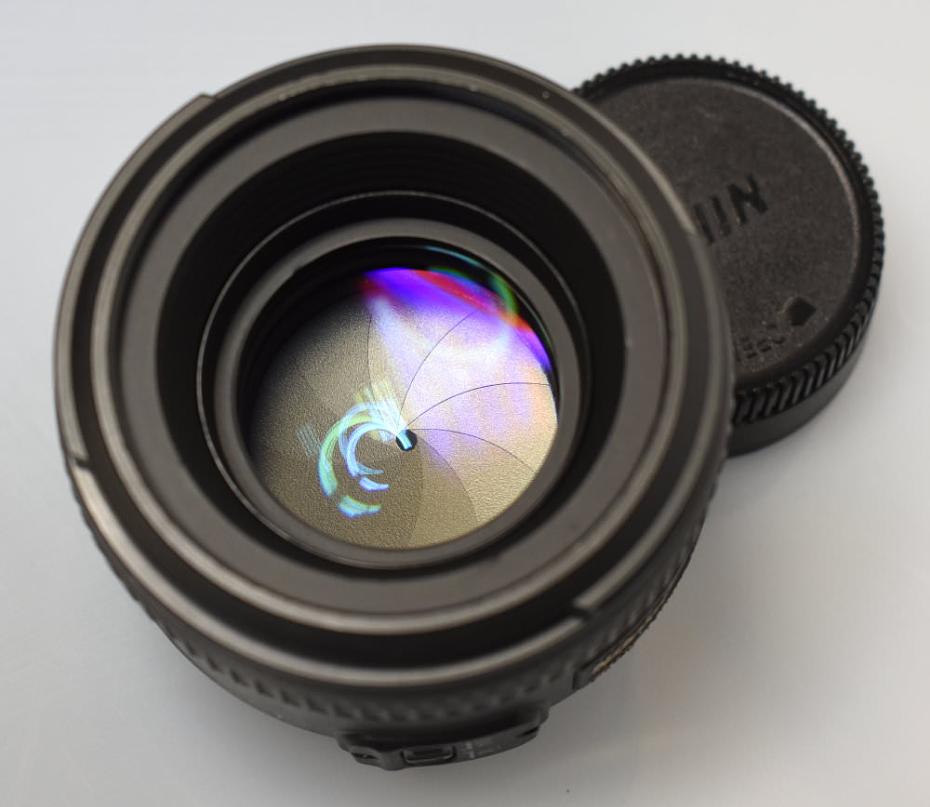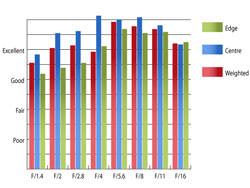Handling and features
Performance
Verdict
Specification

Nikon's 50mm lens line up has now received the AF-S treatment. Here Gary Wolstenholme puts this optic to the test.
Nikon's AF-S G 50mm f/1.4 lens costs around £290 and sports a Silent Wave Focusing motor with full-time manual override and a revised optical design. The AF-S motor allows this lens to focus properly on Nikon's latest entry-level cameras, such as the D3100.
Those wishing to save a few pennies and don't own one of Nikon's entry-level camera bodies that require AF-S to autofocus currently have two other options from Nikon's lens line up. The older 50mm f/1.4 AF-D lens is still available and costs around £230 and Nikon's popular 50mm f/1.8 AF-D costs only £105. Each of these lenses are of an older design and lack the internal silent focusing motor, but have a manual aperture ring which will allow them to be used with older Nikon film cameras.
The only equivalent third party offering is Sigma's 50mm f/1.4 HSM, which costs around £90 at £380 more than Nikon's version. It also has a silent focusing motor and manual focus adjustments are possible at any time.
Nikon AF-S Nikkor 50mm f/1.4G: Handling and features

Build quality-wise this 50mm lens is pretty typical of Nikon's higher-end consumer offerings. The lens barrel is constructed from high quality textured plastic and a distance scale window with an embossed gold surround featured on the top. Weighing only 280g, it isn't a heavy or large lens.
The silent wave focusing motor is certainly very quiet, but focusing speeds are noticeably slower than with the older screw-driven version. On the plus side the accuracy of focus is very good once it gets there, making the wide f/1.4 aperture very usable indeed. Manual focus adjustments can be made at any time by turning the narrow rubberised focus ring, even when autofocus. A small switch is located on the side of the lens to change between automatic and manual focusing.
A nine-bladed diaphragm ensures the out of focus blur is nice and smooth, making this lens an excellent choice for portraits on a Nikon body with a DX sensor. The filter thread is 58mm in diameter, which is a little odd for Nikon lenses, which are normally either 52mm or 62mm on a lens of this size. This may pose problems for those who've invested in filters for other Nikon prime lenses. The filter thread does not rotate during focusing, making the lens easy to use with polarising filters.
Even with the slower than expected focusing speeds, I really enjoyed using the lens due to it's excellent build and lightweight design.

Nikon AF-S Nikkor 50mm f/1.4G: Performance
Even wide open at f/1.4 this new 50mm lens produces images with very good resolution in the centre of the image and good sharpness towards the edges. As you might expect, the lens' performance gets better as it is stopped down with peak performance across the frame being achieved between f/5.6 and f/8, where the sharpness is outstanding across the frame. Stopping the lens down does reduce the resolution recorded a little, but even at the smallest aperture sharpness is excellent across the frame.
|
Resolution at 50mm
|
How to read our graphs The blue column represents readings from the centre of the picture frame at the various apertures and the green is from the edges. Averaging them out gives the red weighted column. The scale on the left side is an indication of actual image resolution. The taller the column, the better the lens performance. Simple. For this review, the lens was tested on a Nikon D700 using Imatest. |
Chromatic aberrations are kept to low enough levels that they shouldn't pose any issues for all but the largest print sizes. Even wide-open fringing is kept to a minimum, despite the lack of exotic low dispersion in the optical formula.
| Chromatic Aberrations at 50mm | How to read out charts Chromatic aberration is the lens' inability to focus on the sensor or film all colours of visible light at the same point. Severe chromatic aberration gives a noticeable fringing or a halo effect around sharp edges within the picture. It can be cured in software. Apochromatic lenses have special lens elements (aspheric, extra-low dispersion etc) to minimize the problem, hence they usually cost more. For this review, the lens was tested on a Nikon D700 using Imatest. |
 |
As is common with wide aperture lenses, falloff of illumination towards the corners is quite pronounced at f/1.4. Here the corners are 3.05 stops darker than the image centre. Stopping the lens down to f/5.6 results in visually even illumination across the frame.
A slight amount of barrel distortion of 2.23% was detected by Imatest, which is quite common for wide-aperture lenses like this. The distortion pattern is uniform across he frame so if this low level of curvature is a problem, as it might be for critical applications such as copy stand work, then it should be easy enough to correct in image editing software afterwards.
Nikon AF-S Nikkor 50mm f/1.4G Sample Photos
Despite lacking the exotic nano crystal lens coatings found on many of Nikon's latest top-end lenses, the deeply recessed front element and supplied circular hood offer a decent amount of protection against flare and ghosting. When shooting directly into strong light sources flare and reflections between the lens and sensor can be an issue, especially at wide apertures, but only in extreme circumstances.
Nikon AF-S Nikkor 50mm f/1.4G Lens Review: DxOMark provides objective, independent, RAW-based image quality performance data for lenses and digital cameras to help you select the best equipment to meet your photographic needs.
Visit the DxOMark website for tests performed on the Nikon AF-S Nikkor 50mm f/1.4G.
Nikon AF-S Nikkor 50mm f/1.4G: Verdict
Having owned the older AF-D version for some time, I can say this update is a welcome one. The build and silent focusing are welcome refinements, even if the focusing speed does seem a little slow. Performance throughout the aperture range is very good to outstanding, which is what you would expect from a lens of this type, and as a result this lens should not disappoint even the most discerning photographers.
Nikon AF-S Nikkor 50mm f/1.4G Lens Review: Nikon AF-S Nikkor 50mm f/1.4G For the price, this lens represents excellent value for money.




